Affiliate disclosure: This post may contain affiliate links. Please see our Privacy Policy.
Wild lettuce tincture is best known for its unique pain-relieving properties. In traditional medicine, it’s also considered a nervine tincture, helping to relieve anxiety and promote feelings of wellness. Historically, the sap from wild lettuce was called “lettuce opium” for its similar analgesic, relaxant, and sedative properties to opium. While the association with opium is mostly an exaggeration, with a little caution, wild lettuce tincture can be an effective herbal pain reliever that is is much milder and safer than other options. It’s also easy to make at home.
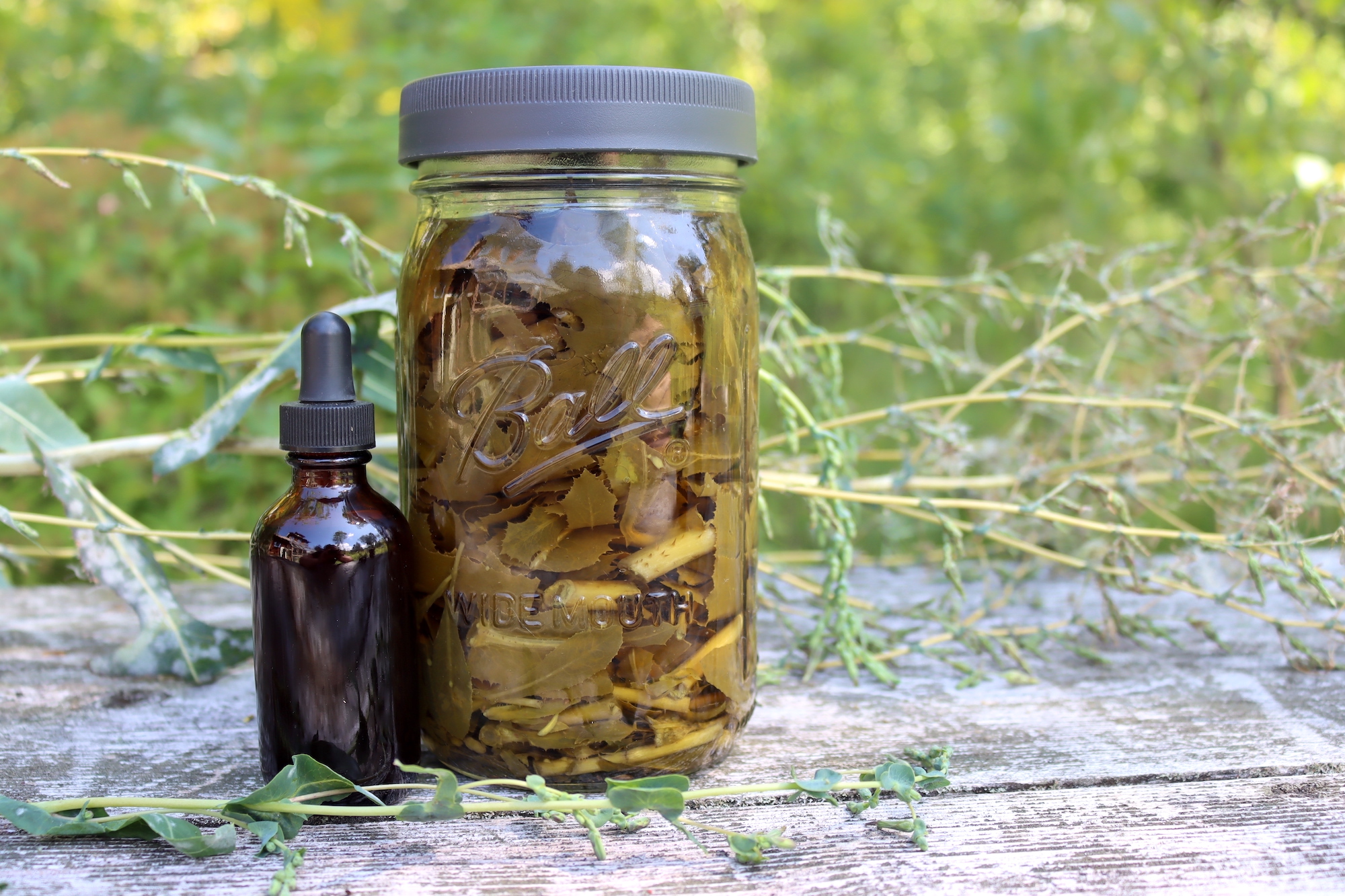
Mature wild lettuce plants contain a compound called Lactucin. This compound gives the plant its analgesic, sedative, and relaxant properties. It’s a great homemade alternative to ibuprofen and aspirin for treating headaches and mild pain. It can also help soothe anxiety and promote restfulness and sleep.
Unfortunately, to make this amazing tincture, you need live wild lettuce plants. Ordering the dried leaves online won’t do. You have to harvest the sap from the flowering stem.
Thankfully, foragers can find wild lettuce throughout North America. There are several different species, including Tall Blue Lettuce (Latuca biennis), Canada Wild Lettuce (Latuca canadensis), Prickly Lettuce (Latuca serriola), and Bitter Lettuce (Lactuca virosa).
If you’re interested in having a more reliable supply at hand, you can cultivate wild lettuce in your garden. You can harvest seeds in the wild from plants that you’re positively identified or order them online.
Sow your wild lettuce seeds in an area with prepared soil and full sunlight. Thin your plants to about 12 inches apart to ensure you get good-sized mature plants.
Wild lettuce is a biennial, meaning it won’t send up a flowering stalk until its second year. However, you can harvest some of the leaves during the first year for food or tea. If you let it self-seed, it may become weedy in the garden.
While this hasn’t been tested, it’s worth noting that cultivated wild lettuce plants may not share all of the same attributes as their wild counterparts. Soil quality and environmental pressure can affect the levels of certain compounds found in some plants, and it’s possible that cultivated plants could have milder effects.
I’ll walk you through how to make your own bottle of wild lettuce tincture if you find plants in the wild, but if you don’t have access to plants, you can also buy a bottle of ready-made tincture.

(Always consult your doctor or a clinical herbalist before trying any new herbal remedy, as there’s always the possibility of unintended consequences, allergic reaction, or interactions with other medication. If you’re harvesting wild plant material, make sure you’re 100% confident in your identification and consult multiple sources for your ID. The following is based on my research and experience, but I don’t claim to have any certifications that would qualify me to advise you on your health. Please do your own research and always verify with multiple reputable sources.)
Wild Lettuce Tincture Uses
Herbalists use wild lettuce tinctures both topically and internally to treat a variety of ailments.
Topically, wild lettuce tincture is used for:
- Relieve Itching & Irritation
- Soothe Painful Bug Bites and Minor Wounds
Internally, wild lettuce tincture is used to:
- Relieve Pain, including from Joint and Menstrual Issues
- Soothe Anxiety
- Promote Sleep
Additionally, the herb is currently being investigated for its potential:
- Treat Neurodegenerative Diseases
- Anti-Malarial Properties
- Anti-Cancer Properties
In these cases, research is ongoing, and more work is needed to establish whether or not the benefits are scientifically significant.
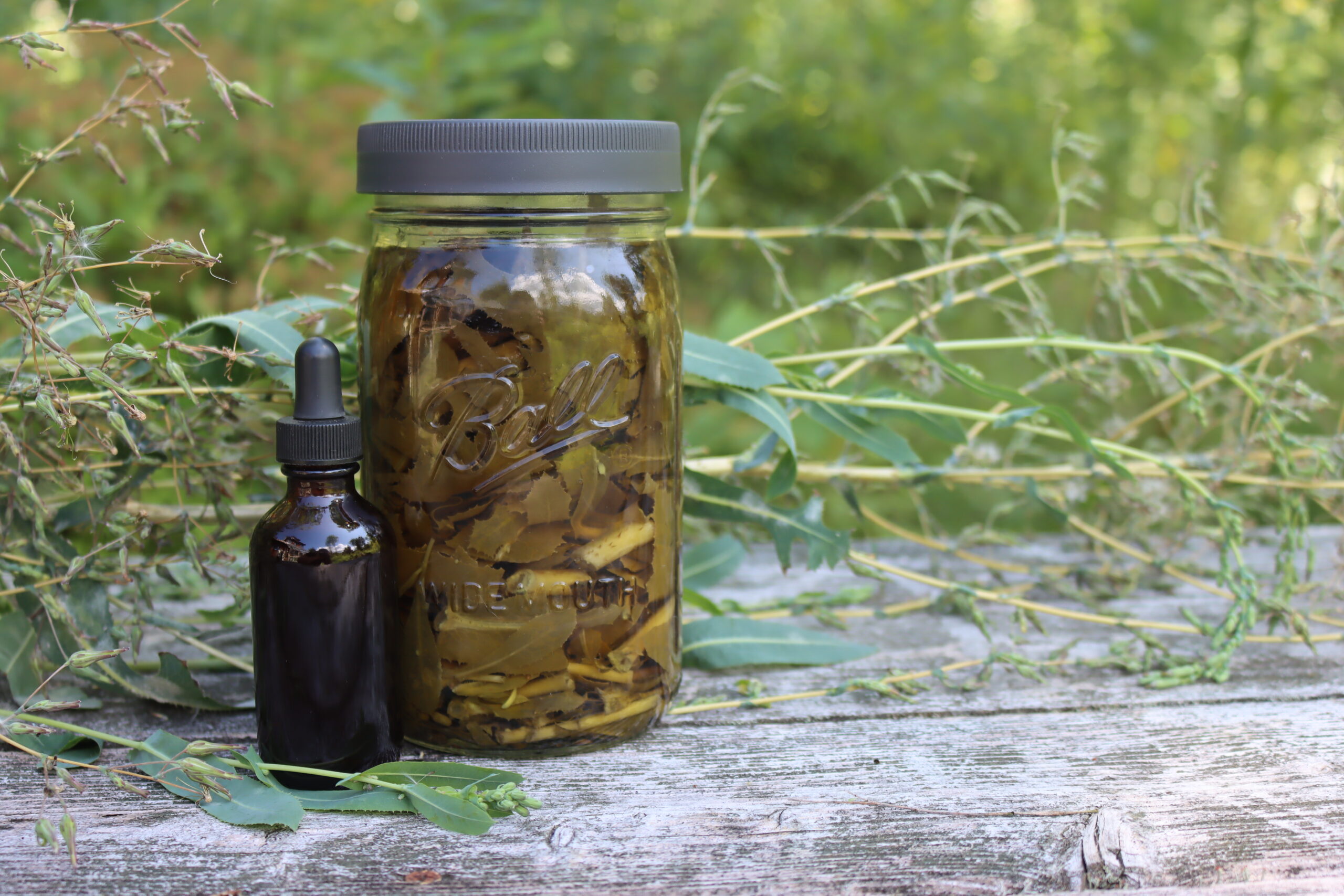
Benefits of Wild Lettuce Tincture
Herbalists have used wild lettuce tincture for hundreds of years. Our earliest written mention of the benefits of wild lettuce comes from the Persian physician-philosopher Avicenna’s The Canon of Medicine, completed in 1025 CE.
Throughout the years, herbalists have used wild lettuce to treat menstrual pain, sore throats, respiratory conditions, sunburn, kidney disorders, chronic pain, and joint pain. It has also been used as a general pain reliever, sedative, and diuretic.
Unfortunately, few modern studies have focused on the use of wild lettuce for humans. There have been a few animal studies and studies looking at the compounds in wild lettuce, particularly those that are also found in domestic lettuce.
Despite the limited research, a few good studies indicate that wild lettuce does have some potent medicinal properties. A 2006 study looked at the effect of lactucin, a compound in wild lettuce, on mice. Researchers found that lactucin had comparable analgesic or pain-relieving properties to the standard drug ibuprofen. Additionally, they noted that it showed some sedative properties. An older study completed in 1996 had similar findings and indicated that lactucin was an effective sedative for mice at low doses and an effective pain reliever at slightly higher doses.
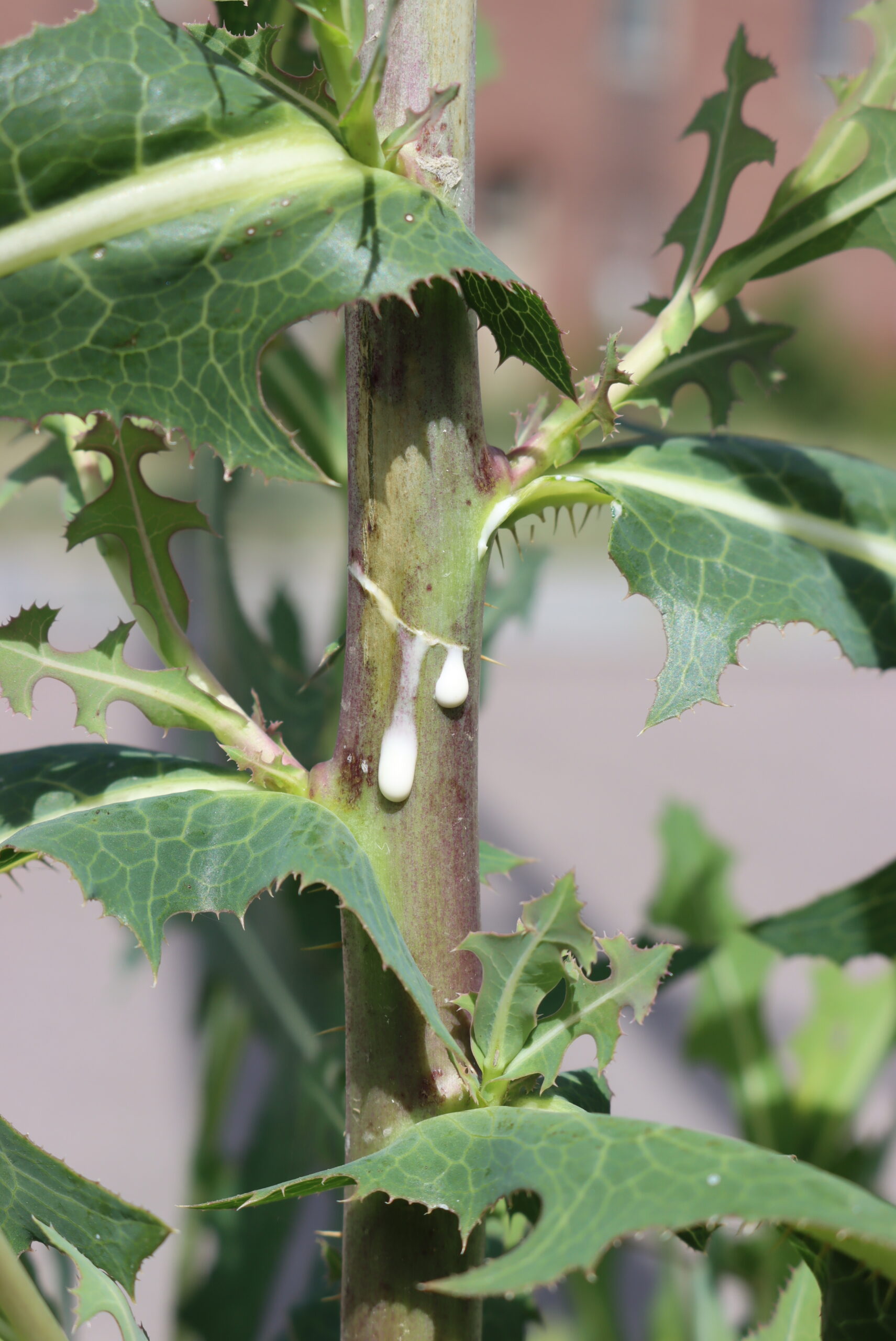
A 2017 study also supported the use of lactucin as a sleep aid. Researchers found that mice given lactucin from lettuce seed had a shorter sleep latency period, meaning they fell asleep faster. They also found that the mice had an increased sleep duration.
Wild lettuce’s compounds may also provide relief from itching and skin irritation. In a 2022 molecular study, researchers looked at the potential for treating Uremic pruritus, a condition that causes severe itching related to end-stage renal disease, with compounds in domestic lettuce (Lactuca sativa). Researchers found that the lettuce compounds had better antipruritic or anti-itch activity than the traditional drug, gabapentin.
Lactucin, one of wild lettuce’s major medicinal compounds is also found in other plants that have been the focus of modern research. A 2022 study on the lactucin found in chicory indicated that lactucin may inhibit the growth of lung cancer cells. Another study found that the lactucopicrin found in chicory, similar to wild lettuce, may help prevent neurodegenerative diseases.
Further, in test tube studies, both lactucin and lactucopicrin displayed antimalarial effects.
As wild lettuce has sedative properties, herbalists generally recommend combining it with other sedatives, including alcohol, prescription sedatives, opioids, and antihistamines like Benadryl (diphenhydramine).
Generally, wild lettuce tincture is only recommended for adults, with the dosage being ½ to 1 dropper full up to three times per day or as needed. Wild lettuce tincture isn’t considered addictive, but most herbalists recommend you only take it up to three days in a row. Overusing wild lettuce may result in dizziness, nausea, and vomiting.
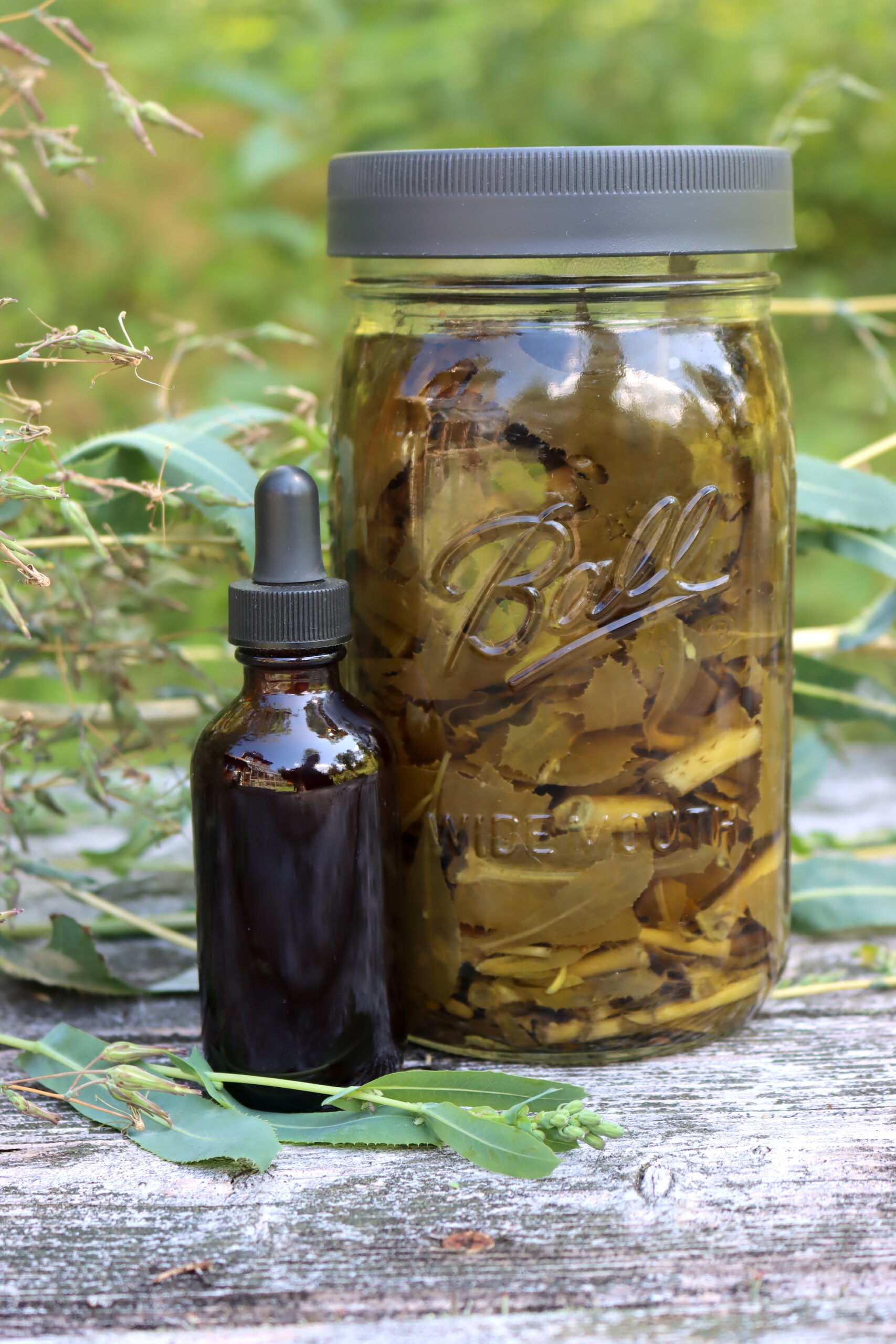
Wild Lettuce Identification
There are quite a few wild lettuce look alikes, but many of them have similar properties. (Not all of them though, so you really do need to be positive on your identification.)
The main thing you’re looking for is to ensure that you have “true” wild lettuce is spines on the leaf midrib. Sometimes they’re more prominent than others, but that’s one of the main ID features.
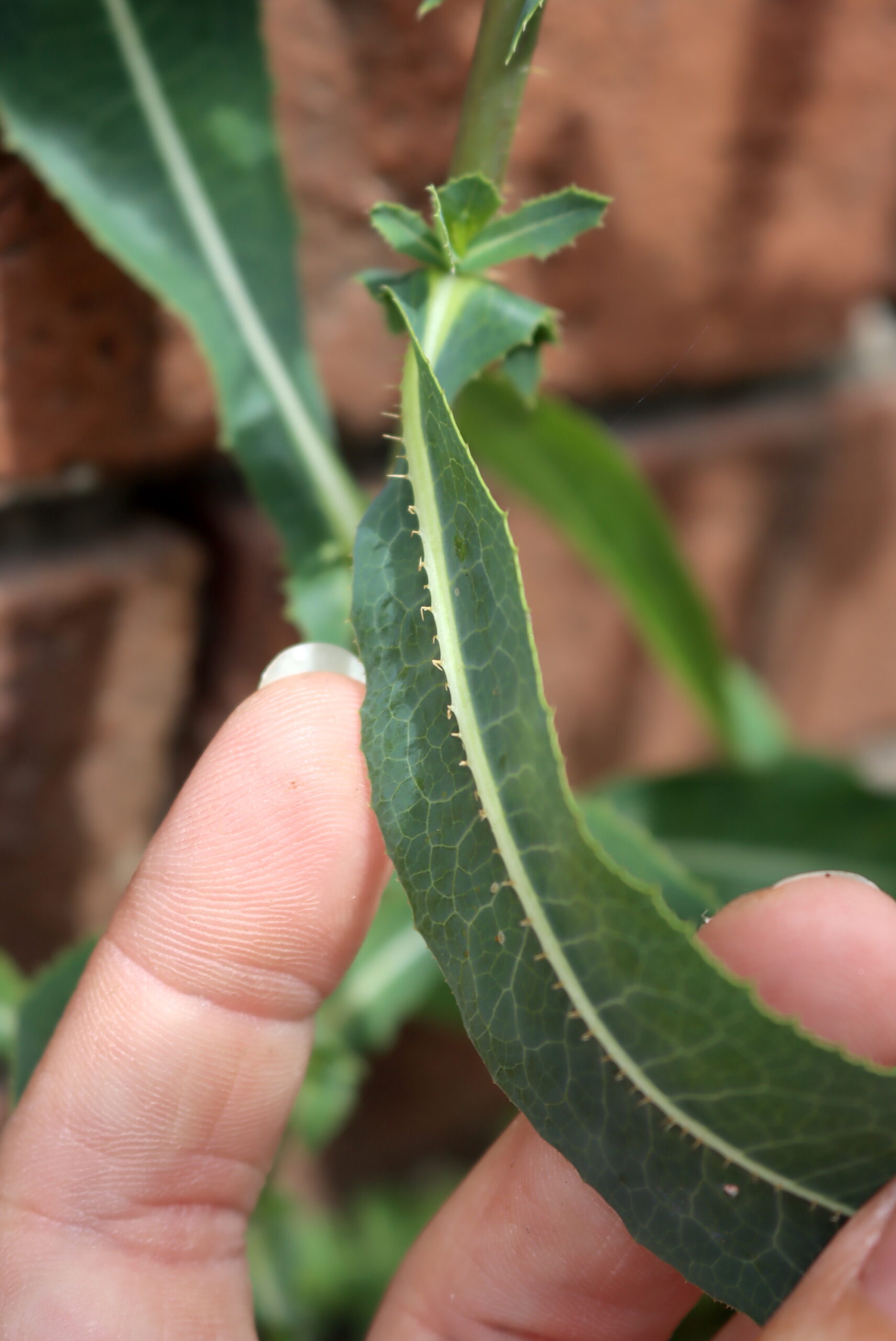
I have a guide to identifying wild lettuce, which has more detailed information. One of my favorite foraging books, Foraging as a Way of Life, also has a really detailed and helpful discussion of wild lettuce.
You’ll often find it growing in abandoned lots or near ill-tended apartment buildings in urban and suburban areas. We live out in the woods, and I’ve never seen it out in the wild. But, I see it all the time in town.
It likes abused soil and neglected patches of dirt by sidewalks. The patch below is in a raised bed garden in town, but one that was put in and never tended. The building behind it was abandoned a many years ago, and those beds have the poor soil where wild lettuce thrives.
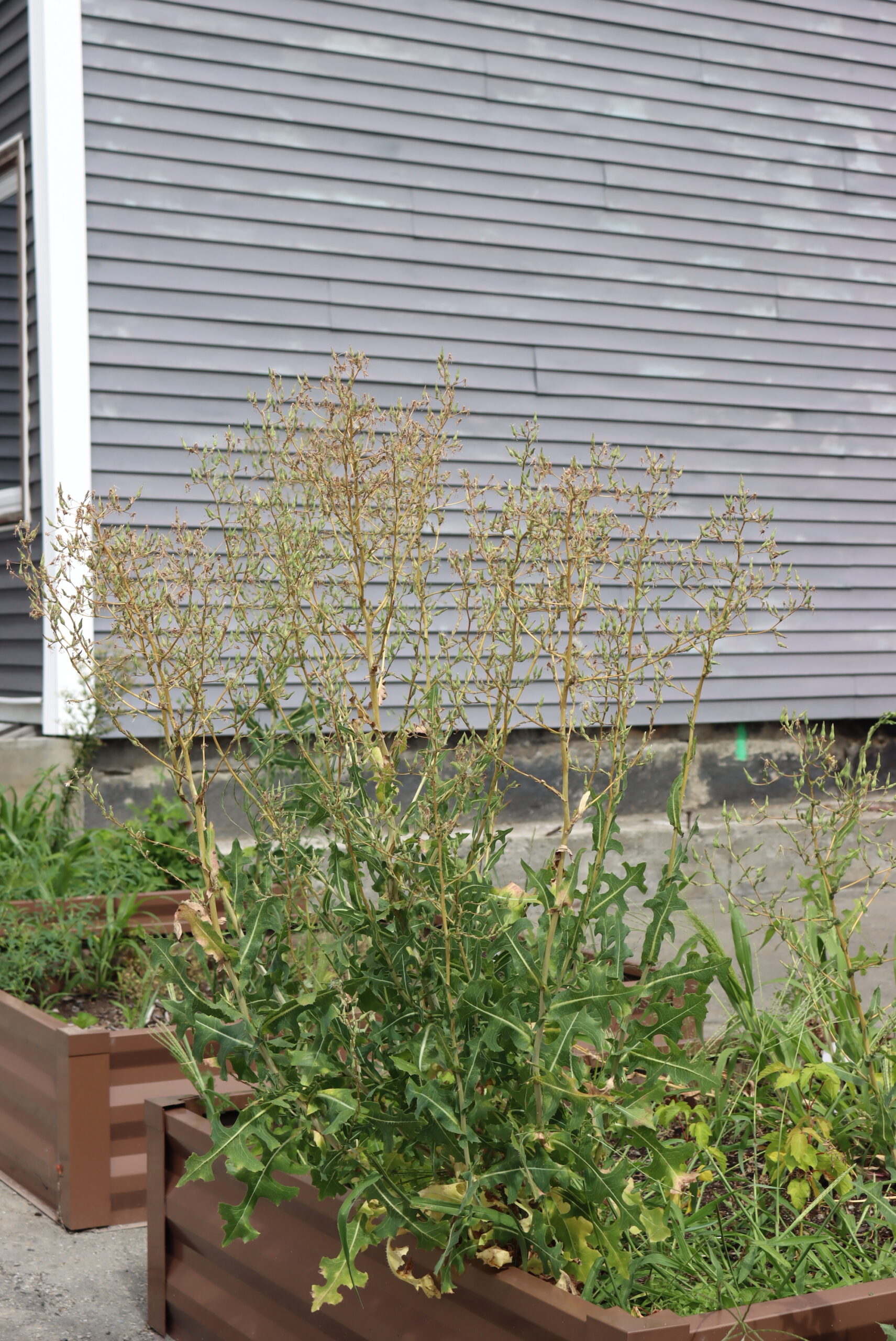
Parts Used for Tincture
Unfortunately, harvesting wild lettuce for tinctures can be a tedious process. While you can harvest the leaves for food and tea, it’s the sap from the flowering stem you want for the tincture.
Like domestic lettuce, the plant doesn’t produce much of the potent sap until it’s about to flower or is flowering, which happens when the plant is two years old. This sap, full of medicinal compounds we enjoy, protects the plant from predation. It’s extremely bitter and helps deter pests and wildlife.

To harvest the sap from wild lettuce, we need to slowly damage the plant to get it to produce. First, snip off the flowering top. After about 15 seconds or so, you should see white sap oozing from the stem.
When the sap has oozed out, cut off about ½ inch of stem and drop it into your jar.
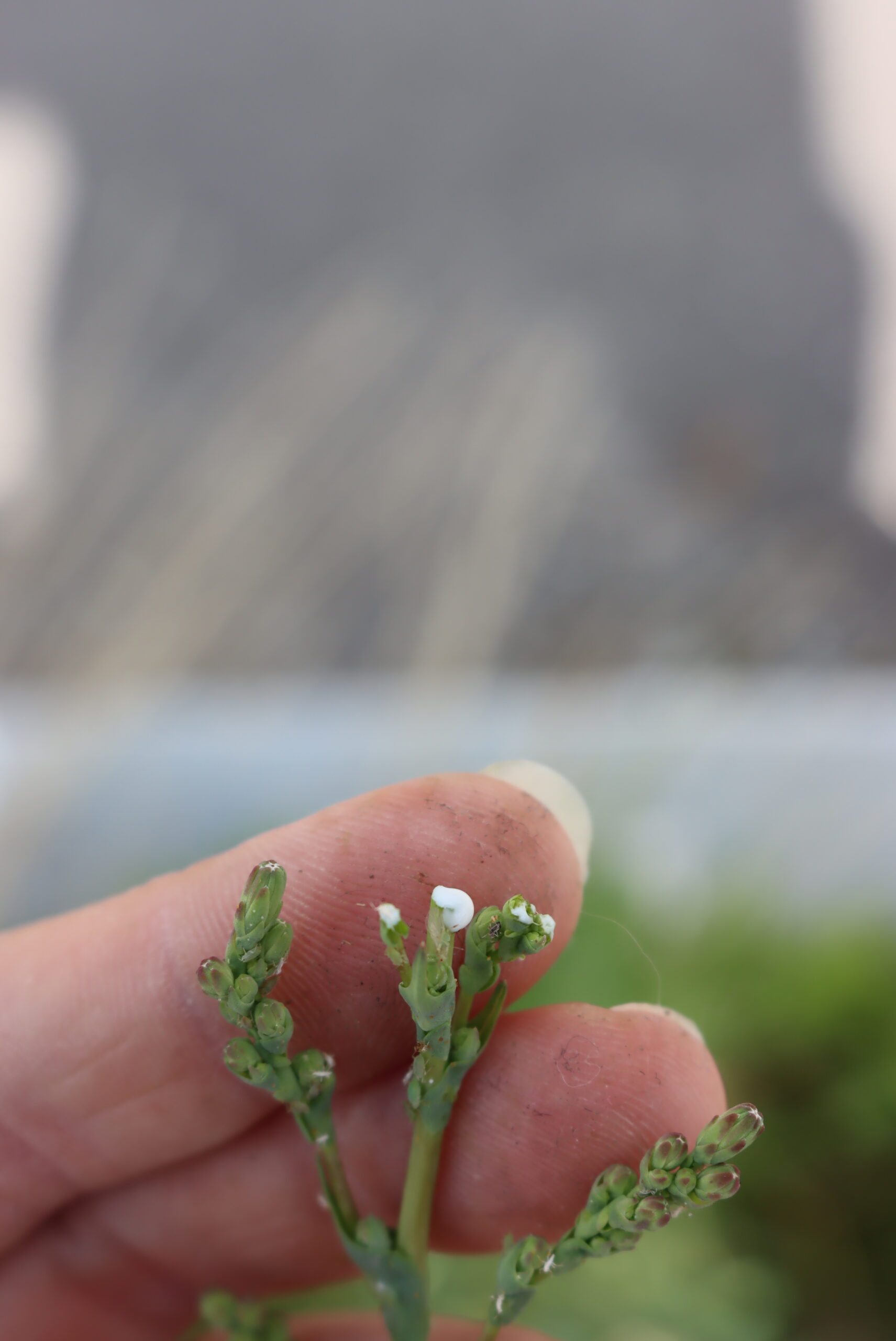
In the past, herbalists sometimes gathered just the sap to dry it. Since we’re making a tincture, separating the sap from the stem is unnecessary, and it’s much easier and cleaner to just gather the stem chunks with sap on them.
When gathering just the sap, it is collected and dried, and then administered in very small doses. It’s a finicky process, and I think you lose more in the process than you collect. Tincture is much easier.
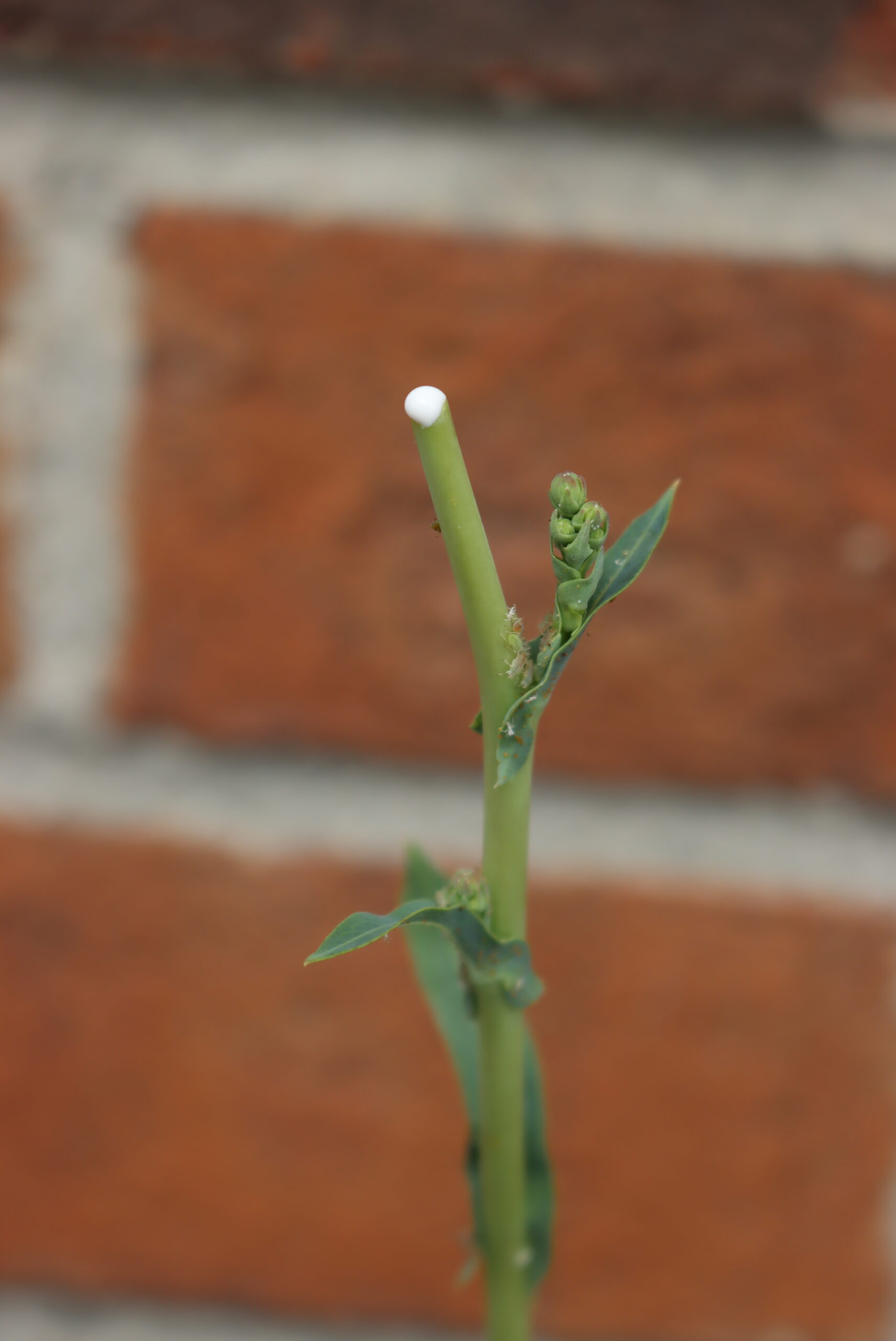
As soon as sap has oozed from the new cut, you can repeat the process, cutting another ½ inch piece of stem and dropping it into your jar. Repeat this process all the way down the stem, always making sure white sap oozes out before you make another cut.
This process may seem weird and unnecessary, but I promise it is essential! The plant doesn’t produce the sap and potent compounds until it’s wounded. Remember that this is its defense against insects and herbivores.
If you just cut up the whole plant, you won’t end up with a strong, concentrated tincture.
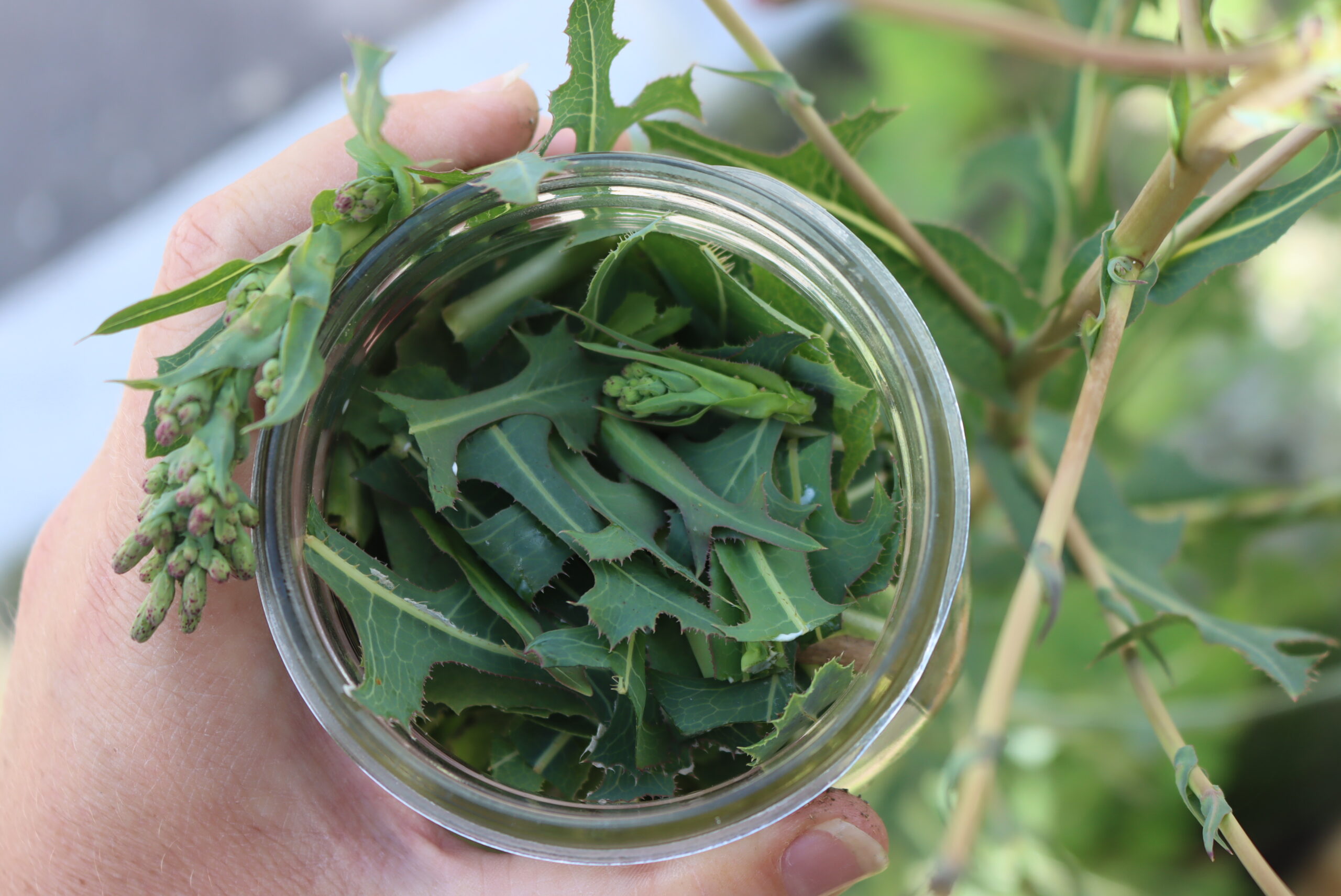
How to Make Wild Lettuce Tincture
To make a wild lettuce tincture, you’ll need the following ingredients and equipment:
- Fresh wild lettuce stem chunks
- Vodka* (or any other palatable alcohol that’s at least 80 proof/40 percent – don’t worry about buying something nice; inexpensive alcohol works great, too!)**
- One-quart mason jar with lid (amber glass is ideal, but as long as you keep the tincture away from light at all times, it won’t make a difference)
- Funnel
- Cheesecloth
- Fine mesh sieve
- Amber glass tincture bottles (with dropper)
*The Herbal Academy’s tincture-making course specifically recommends using 70 to 95% alcohol for working with fresh herbs like wild lettuce.
**Never use isopropyl/rubbing alcohol for tinctures (or any other remedy you plan on ingesting). Even in small amounts, this type of alcohol is toxic and meant for external applications only. If you’re avoiding alcohol for any reason, consider making a herbal glycerite instead. Herbal vinegars are also a good choice, and work well with wild lettuce.
To make your tincture, fill your jar about halfway with wild lettuce stem chunks.
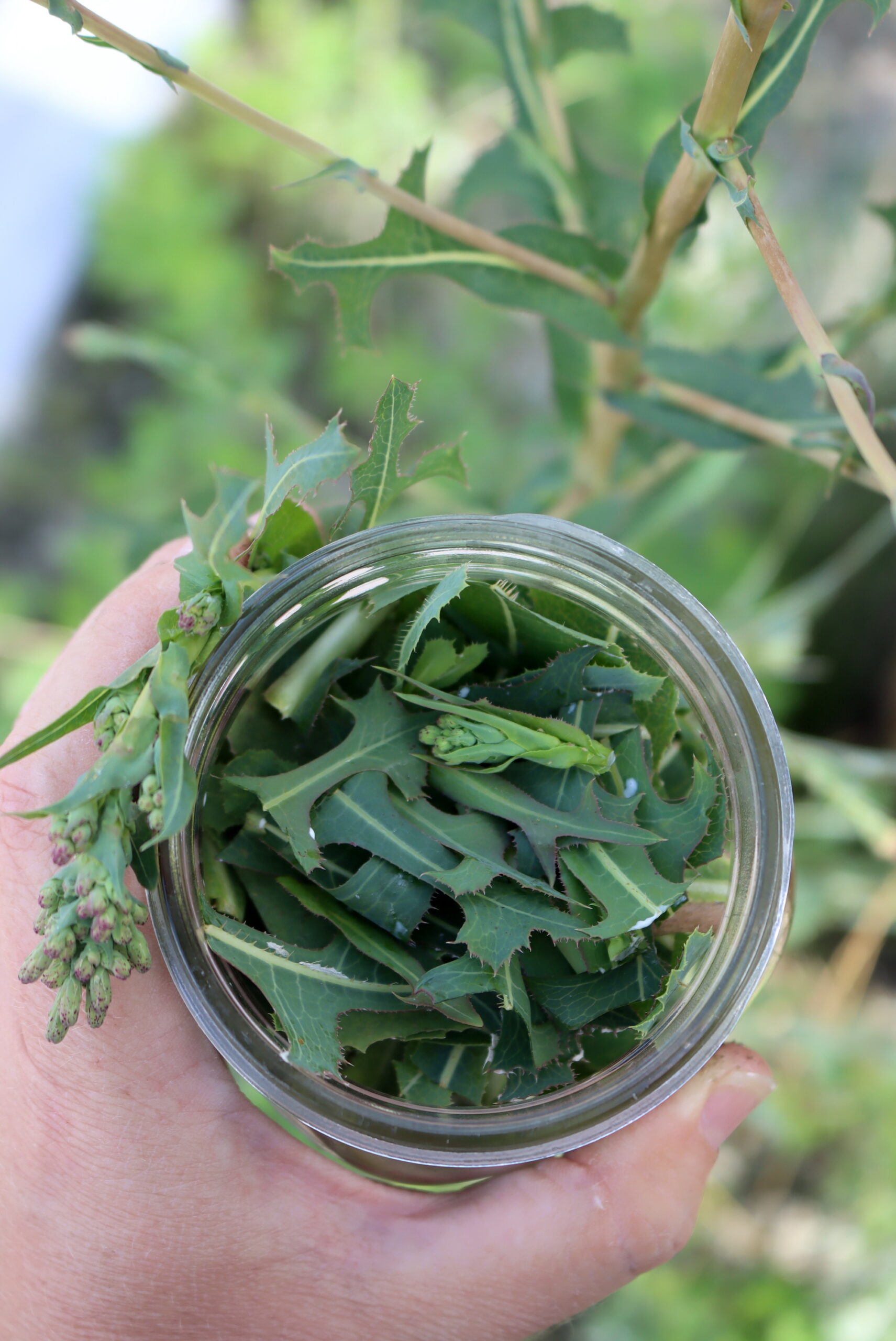
Next, cover the stem wild lettuce with vodka or the alcohol of your choice and seal it with an airtight lid.
Place your jar in a cool, dark place. Your tincture needs to develop for about 4 to 6 weeks. During this period, you should shake your tincture each day, but it’s okay if you miss a day or two. Tinctures are quite forgiving.
After this period, it’s ready to decant! Strain out the stems with cheesecloth and a funnel or a fine mesh sieve, pouring your fresh tincture into tincture bottles. Be sure to squeeze the stems to get all the liquid out and avoid wasting and tincture.
Label each bottle with the name, date, and recommended dose. I use a small piece of masking tape and a marke. It peels off easily when I’m ready to use the bottle for something else.
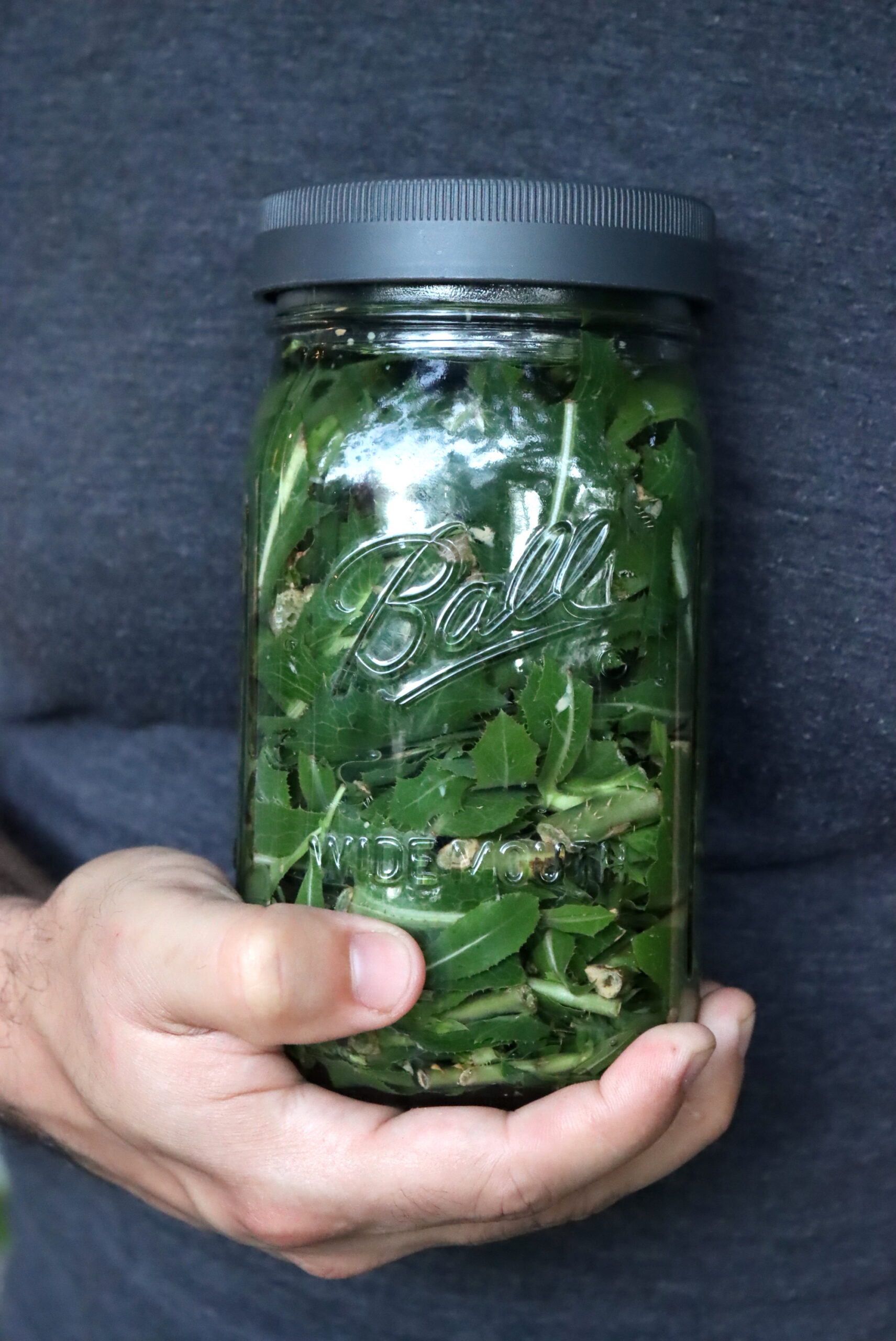
Wild Lettuce Tincture Dosage
I always recommend consulting a clinical herbalist to determine the exact dosage for your body’s specific needs. However, as a general rule, you can take ½ to one dropper full of wild lettuce tincture up to three times per day for up to three days in a row. You can also take it as needed to calm anxiety attacks, fall back asleep, or treat minor pain.
You can also spray or dab your wild lettuce tincture onto minor wounds, insect bites and stings, and skin irritations to help soothe pain, inflammation, and itchiness. Internal doses of wild lettuce tincture may also help with these same issues.
Overusing wild lettuce tincture may cause dizziness, nausea, vomiting, and rapid breathing. Start with small doses, especially if this is your first time taking it.
Don’t take wild lettuce tincture if you’re pregnant or breastfeeding without supervision from a physician or clinical herbalist.

Wild Lettuce Formulations
Wild lettuce is often combined with other herbs for reducing anxiety and promoting sleep. Some of my favorite tinctures to pair it with are chamomile, skullcap, catnip, lemon balm, passionflower, valerian, and hops. When treating pain, wild lettuce also goes well with cloves, St. John’s wort, peppermint, and lavender.
Wild lettuce tincture can help treat the itching and pain associated with certain skin issues. To help promote healing, you can pair it with herbs like jewelweed and aloe vera.
If you’re interested in the science behind combining herbs to enhance their effectiveness, I’d recommend taking this online course in Mastering Herbal Formulations from the Herbal Academy. It covers the science of blending herbs into homemade formulations in detail.
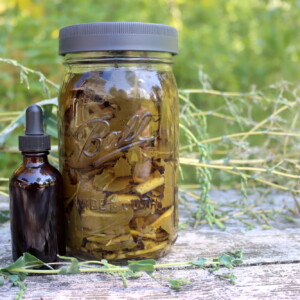
Wild Lettuce Tincture
Equipment
- Small Tincture Funnel Optional
- Cheesecloth, Fine Mesh (90 grade) or fine mesh strainer
- Amber Glass Tincture Bottles (with droppers) for Storage
Ingredients
- Fresh wild lettuce plants in the ground, not dried
- High-proof alcohol vodka, rum, or brandy
Instructions
Harvesting the Wild Lettuce for Tincture
The key to making an effective wild lettuce tincture lies in the gradual extraction of the latex-like sap from the plant. The process requires a series of small cuts down the stem of each wild lettuce stalk to release the sap slowly. Here’s how to harvest the wild lettuce for the best medicinal effect:
- Select healthy, mature wild lettuce plants that are still growing in the ground. Ideally, these plants should be at least 2-3 feet tall (though in shorter growing seasons, they may be smaller). Avoid harvesting plants that are too young or already flowering, as their sap content may be lower.
- Start by cutting off the flowers from each plant. These are typically discarded as they don’t contain the latex. Then, with sharp shears or pruning scissors, begin the process of decapitating the plant by cutting about half an inch down the stalk. This allows the sap to ooze out. Leave the plant in the ground, as the latex is transported up from the roots, and it needs time to travel through the stem.
- After cutting the stalk, allow the sap to ooze out and dry for a short period (around 10-15 minutes). Once it starts to harden slightly, scrape the sap off with a clean knife or spatula. You can either collect the dried sap in a small bowl or directly place the sticky pieces into your tincture jar.
- Continue to cut another half-inch section of the stalk every few minutes, allowing the sap to ooze and dry each time. As the plant becomes shorter and less productive, you will eventually cut it down to about 12 inches in height, and at this point, the plant can be considered fully "bled."
- It’s important to spread out the harvesting over an extended period, with 30 to 60 seconds between each cut. The process of bleeding the plant should not be rushed. For best results, you will need to repeat this process on the plant until it has released as much sap as possible, gradually reducing it to a small, headless stalk.
Preparing the Tincture
- Once you have gathered enough sap filled snippings of wild lettuce, you can proceed with the tincture-making process.
- Add your plant cuttings to your clean mason jar. You’ll want the jar to be about 2/3rds full of wild lettuce trimmings.
- Pour your choice of high-proof alcohol into the jar to fully cover the plant material. Vodka is commonly used, but rum or brandy can also be suitable. Ensure that the sap is completely submerged in the alcohol to allow for full extraction of the medicinal properties. Aim for at least 60-proof alcohol (30% alcohol by volume) to ensure adequate preservation of the tincture.
- Secure the lid tightly and give the jar a gentle shake to mix the alcohol with the sap. The mixture may not look very uniform at first, as the sap will be sticky, but over time, it will dissolve into the alcohol.
- Place the jar in a cool, dark place (a cupboard or pantry works well). For the next 4 to 6 weeks, allow the tincture to sit and infuse. Shake the jar gently every 2-3 days to ensure the sap continues to dissolve into the alcohol.
- After 4 to 6 weeks, the tincture should be ready. Set up a funnel lined with cheesecloth or use a fine mesh strainer to filter out any remaining plant material and solids. Pour the tincture through the funnel into a dark glass tincture bottle. Gently press the plant matter to extract as much liquid as possible.
- Be sure to label your tincture with the name of the herb, the date it was made, and any other relevant information. Store the finished wild lettuce tincture in a cool, dark place. It can last for 18 to 24 months when stored properly.
Notes
Harvesting Considerations
Wild lettuce harvesting is time-intensive and requires patience, but it’s crucial for getting the highest-quality sap. Be sure to take the time to bleed the plants slowly and follow the traditional method to get the most potent latex for tincture-making.Alcohol-Free Option
If you prefer to avoid alcohol, you can also make a glycerite tincture using vegetable glycerin and distilled water. Use a ratio of 3 parts glycerin to 1 part water for dried wild lettuce. For fresh wild lettuce, use 100% glycerin. Shake daily and strain after 4 to 6 weeks.Disclaimer on Homemade Herbal Remedies
I’ve been foraging wild medicines and treating my family with herbal remedies for the past 20 years, but I’m self-taught. Be aware that I am not a clinical herbalist, and this is based on my own research and personal experience using medicinal plants. I do not claim to have the experience that’d qualify me to advise you on your health, and I’m only providing this as a reference to encourage a broader interest in medicinal plants.
Please use this as a jumping-off point, but always do your own research and verify anything you read with multiple sources.
It’s always possible to have an adverse reaction to any medicinal herb, and plenty of people are allergic to even gentle herbs like chamomile. Always consult your doctor or a certified herbalist before trying any new medicinal plant. Often, they can have unintended reactions in combination with other herbs and supplements, and many herbs have side effects even when they are effective for their intended purpose.
If you are seriously interested in herbal medicine, I’d suggest investing in a course in herbal medicine, and I’d recommend any of the online courses put out by the Herbal Academy of New England. Specifically, the introduction to herbal medicine course and the family herbalist group of courses.
They also have a mushroom course, covering both medicinal and edible mushrooms, and a Botany and Wildcrafting Course. I’ve taken both and they’re informative, inspiring, and artfully presented.
Herbal Tinctures
Interested in making other homemade herbal tinctures?
- Yarrow Tincture
- Chickweed Tincture
- Elderberry Tincture
- Dandelion Tincture
- Burdock Tincture
- Echinacea Tincture
Herbal Medicine Making
Herbal medicines don’t stop at tinctures! Learn how to make more homemade medicine…
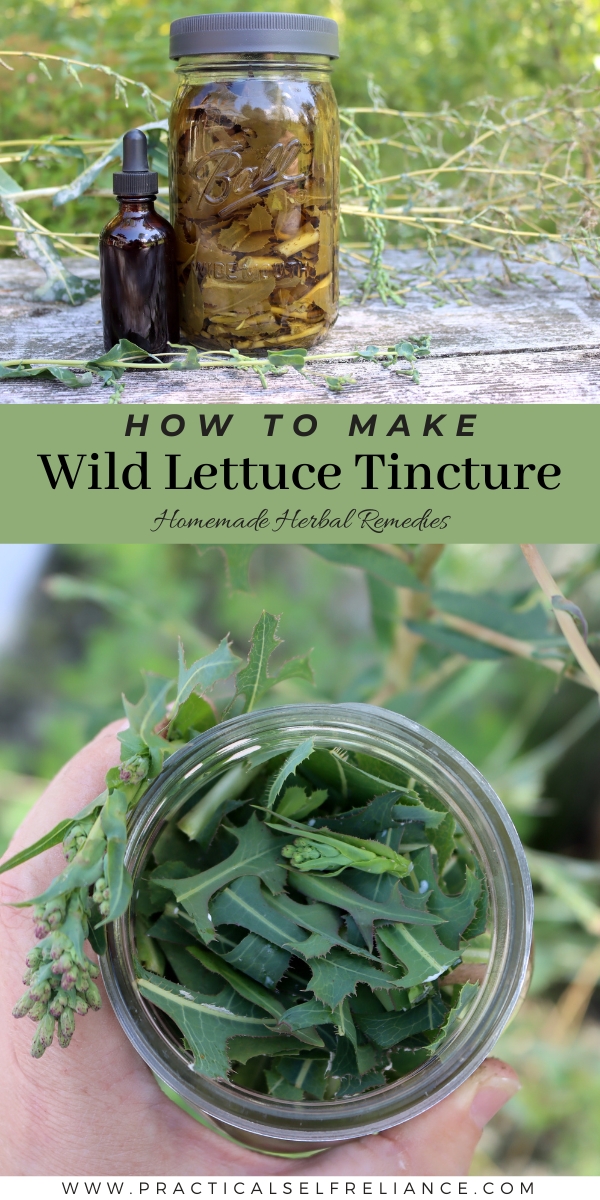
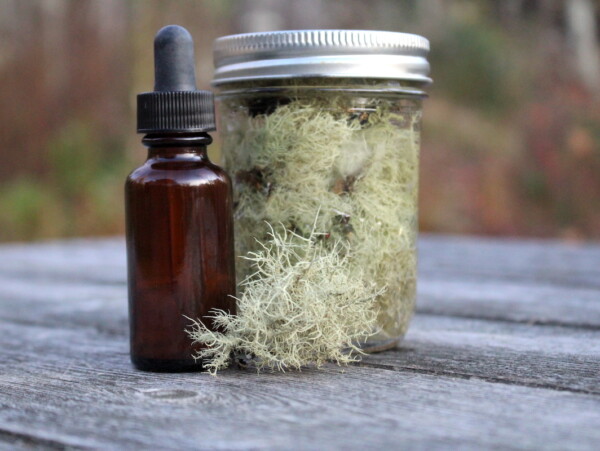
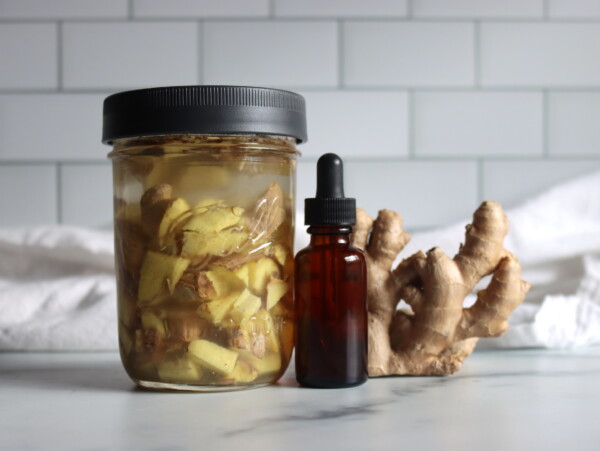
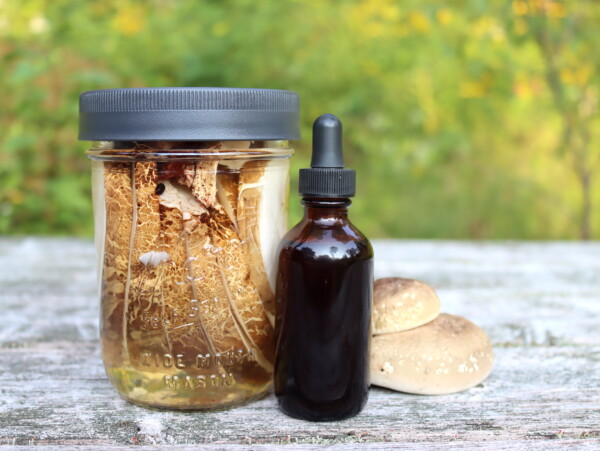
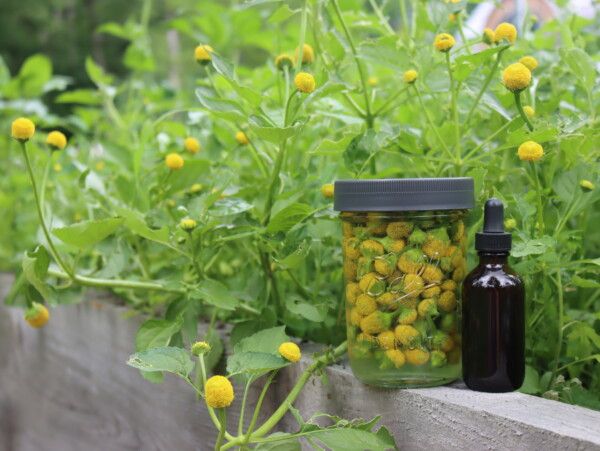










I love reading your articles. You are very knowledgeable about each topic and make it easy to understand. I am learning a lot from you- and I can’t wait to try all these things come summer!! Thank you for sharing!
Glad it’s helpful to you Danielle!